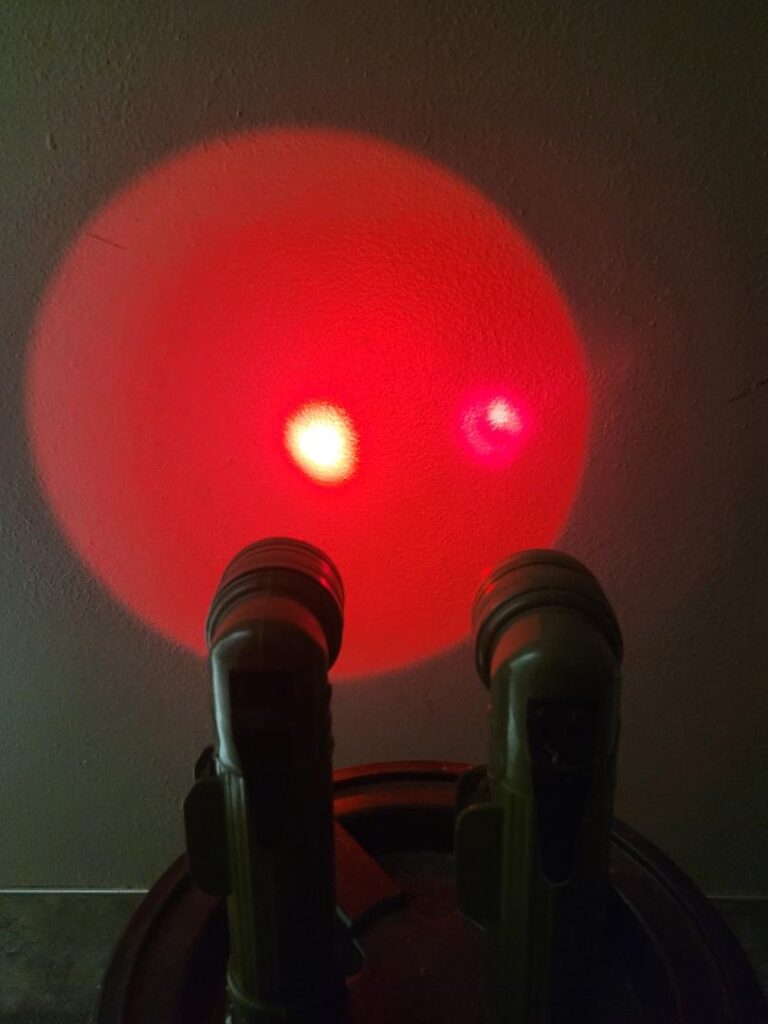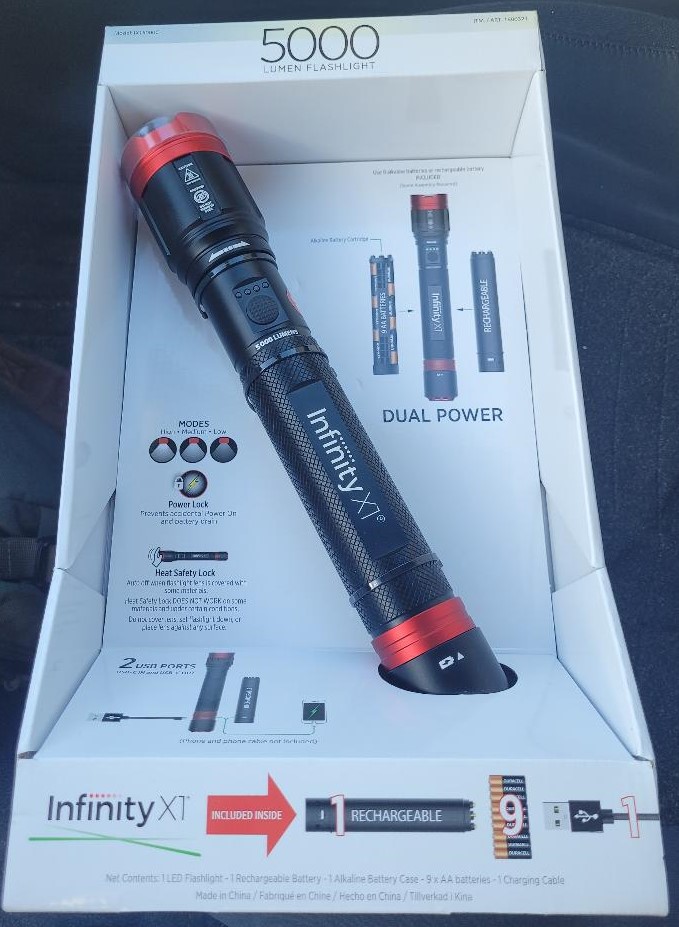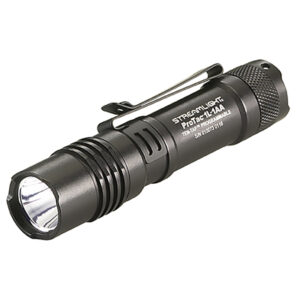Im in the midst of completely reorganzing my basement stash of food, supplies, and other gear. It’s forcing giving me the opportunity to go through a lot of gear that I’ve collected over the thirty years I’ve lived in this house. One of the things I came across was a box of GI anglehead flashlights.
These things are old school with their incandescent light bulbs. They have nice enough features….belt clips, colored filters, lanyard loop, momentary on-off switch for signalling purposes, etc. But that bulb leaves a lot to be desired in a world of LED brightness and efficiency.
Out of curiosity, I decided to order a couple LED replacement bulbs.
I want to say, right off the bat, that this was not an efficient and economical way to go. The replacement bulbs, on Amazon, are about $17. For $17 you can buy a fairly decent flashlight that’s already LED native. However, I was still intellectually curious about the difference in performance that the LED bulb would offer the GI anglehead over the regular bulb.
Res ipsa loquitur:

 Clearly, the LED has an advantage over the OEM incandescent bulb. And while this is simply an interesting anecdote regarding the tactics of upgrading these flashlights, it has a lesson about the strategy of upgrading these flashlights. The lesson here is that sometimes the juice isn’t worth the squeeze. Legacy gear can sometimes be brought up to modern standards, but sometimes it is more effort and expense to do so. At that point it’s time to throw up your hands and realize it’s time to clean house and start over.
Clearly, the LED has an advantage over the OEM incandescent bulb. And while this is simply an interesting anecdote regarding the tactics of upgrading these flashlights, it has a lesson about the strategy of upgrading these flashlights. The lesson here is that sometimes the juice isn’t worth the squeeze. Legacy gear can sometimes be brought up to modern standards, but sometimes it is more effort and expense to do so. At that point it’s time to throw up your hands and realize it’s time to clean house and start over.
Let me give you an example of this. I had a friend, now deceased, whom I have mentioned before. He thought that he needed a .30 caliber semi-auto rifle to prepare for the upcoming apocalypse. He wound up, in one incarnation, buying a Remington 7400, finding some sort of military-ish stock, locating aftermarket ten-round magazines of questionable reliability, and going through all sorts of financial contortions to basically re-invent the M1A. If he had just bought a Springfield Armory M1A he would have saved himself a ton of time, money, and reliability issues. But he had the 7400 and thought it could be made ‘just as good as’ a military-style semi-auto .308.
Sometimes it just isnt worth updating or ‘upgrading’ a legacy item when the technology and manufacturing have advanced. Here’s another example – I have a few incandescent MagLites that I purchased twenty years ago. They have an on/of switch, a krypton bulb, and run times of a couple hours on a pair of D-batts. In my pocket, right now, I have a Streamlight that has an on/off/low/high/strobe switch, an unbreakable LED bulb, and will put out as much light as the old MagLite…and it’s a fraction of the size. Inflation adjusted, its about the same price. (And, yes, you can buy LED upgrades for MagLites but they don’t work as well as a native LED MagLite. Reflector geometry and all that.) So, it really doesn’t make a lot of sense to upgrade or update these 20-year-old lights. No reason to toss them, though. They can serve in a tertiary role around the house or something.
As I continue with my reorganization project, I am finding a few items here and there that are old enough that it just doesn’t make sense to upgrade them to modern standards. Some things are worth it, yes, but you really need to look at each item with an objective view as to whether its worth upgrading or replacing.
So…there’s some data on flashlights for ya.


